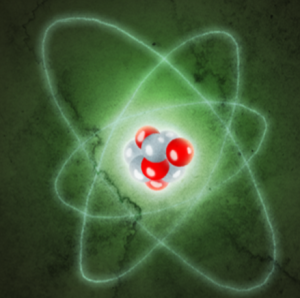If I were to show you a very small section of a famous painting and asked why this specific piece of the artwork mattered, how would you respond? Personally, I would want to see the whole painting before I would feel comfortable responding properly. I would want to know where this zoomed in section I am viewing is located with respect to the picture as a whole, before I could describe its purpose and function practically and with precision. Was this a foot, an apple, or was it a part of the border? Without first seeing the whole picture, it would be difficult to fully grasp the importance of this smaller section. In the same way, without understanding where chemistry lies with the scheme of the science, with the scale of all things practical, without first getting a glimpse of the big picture, it is difficult to truly appreciate and understand chemistry. This is what I hope to do in this post.
Everything that you can see and touch, literally every physical object around you is made from only three particles. That’s right THREE! These three particles are protons, neutrons and electrons. (We will go into the details of these three particles in a later post) Now atoms are made from various combinations of these three particles. Since these three particles are smaller than atoms, which they combine to make, they are called “Sub-Atomic” particles. “Sub” meaning smaller than, and “Atomic” meaning atoms – so Sub-Atomic Particles means particles smaller than the atom. This may come as a shock, so sit back and think about this for a second. Everything physical and tangible in our universe (your shoes, your clothes, your hair, and even you!) is made from only THREE particles.
Like we discussed earlier, these three particles come together in varying numbers to form atoms. And there are roughly 118 distinct types of atoms (Such as carbon, sodium, silver and nickel – more accurately referred to as Elements but I will discuss this distinction in a later post). Now these atoms come together in varying numbers to form millions of different types of molecules and compounds (such as water, carbon monoxide, glucose and various proteins – I’ll discuss the difference between molecules and compounds in a later post). These millions of different types of molecules and compounds combine in various ways to form the vast number of components in your cells, the food we eat, the atmosphere, earth, and plants around us.
So to recap:
- Every physical object that you see around you can be broken down into only THREE tiny particles: protons, neutrons and electrons.
- Different numbers of these three particles combine to form around 118 different types of atoms (for example – roughly 8 protons, 8 neutrons and 8 electrons go into forming oxygen whereas only 6 of each go into forming carbon).
- Differing numbers and combinations of these 118 distinct types of atoms (i.e carbon and oxygen) come together to form millions of different kinds of molecules and compounds (for example – roughly 6 carbon atoms, 6 oxygen atoms and 12 hydrogen atoms go into for the molecule glucose).
- And these millions of different types of molecules and compounds form almost everything in our universe (for example – thousands of glucose molecule go into making the bran muffin you ate for breakfast)!

